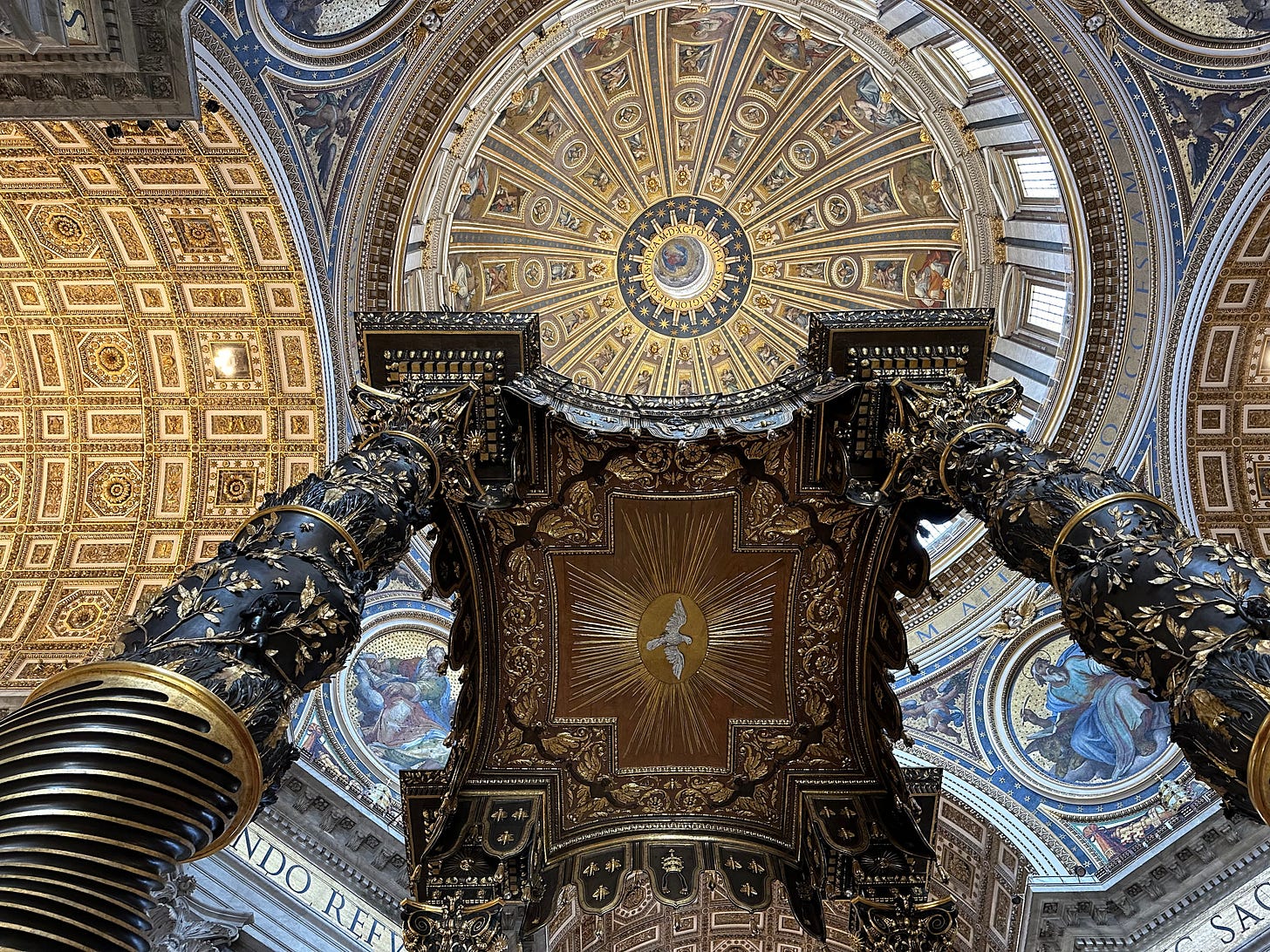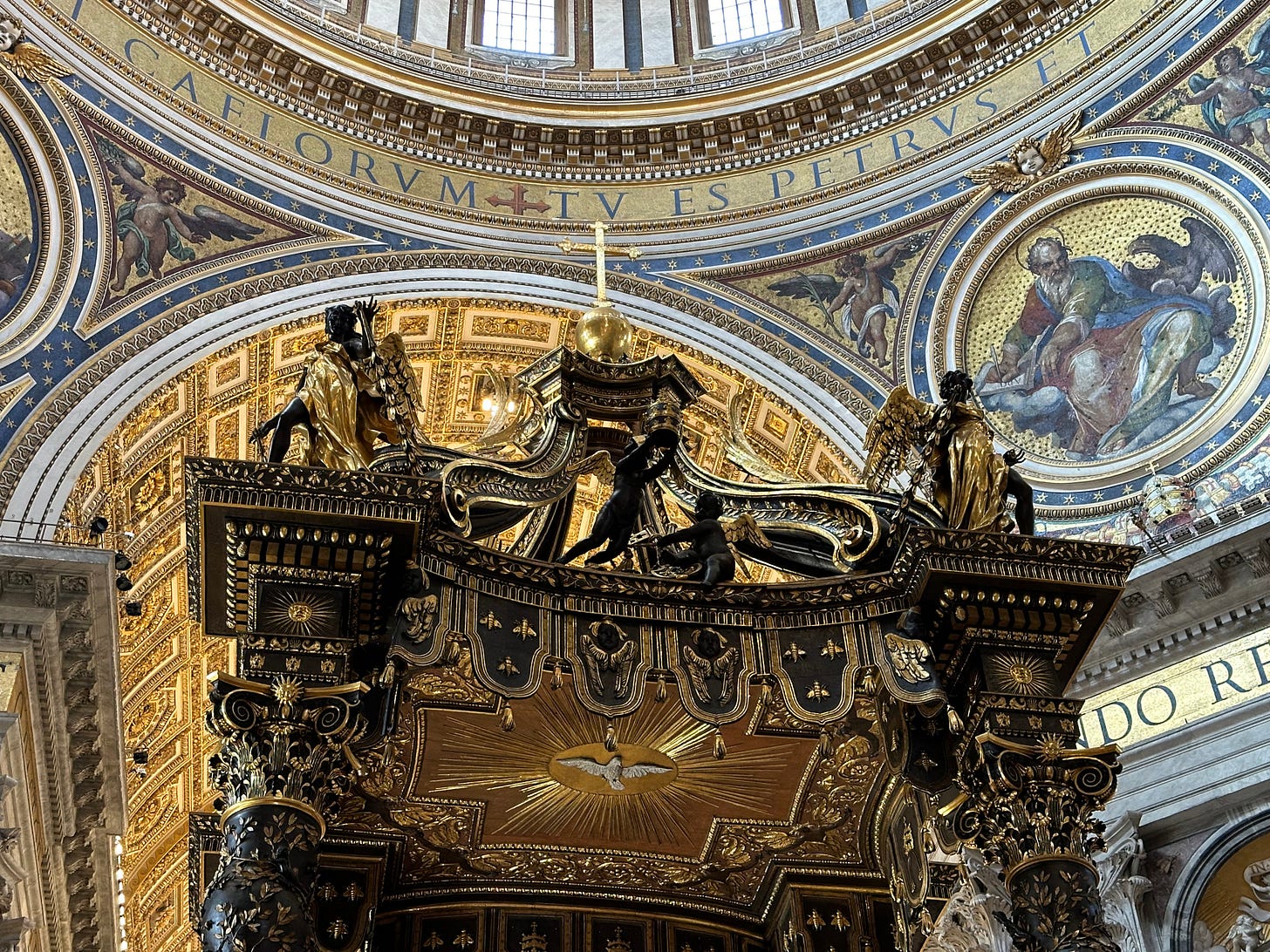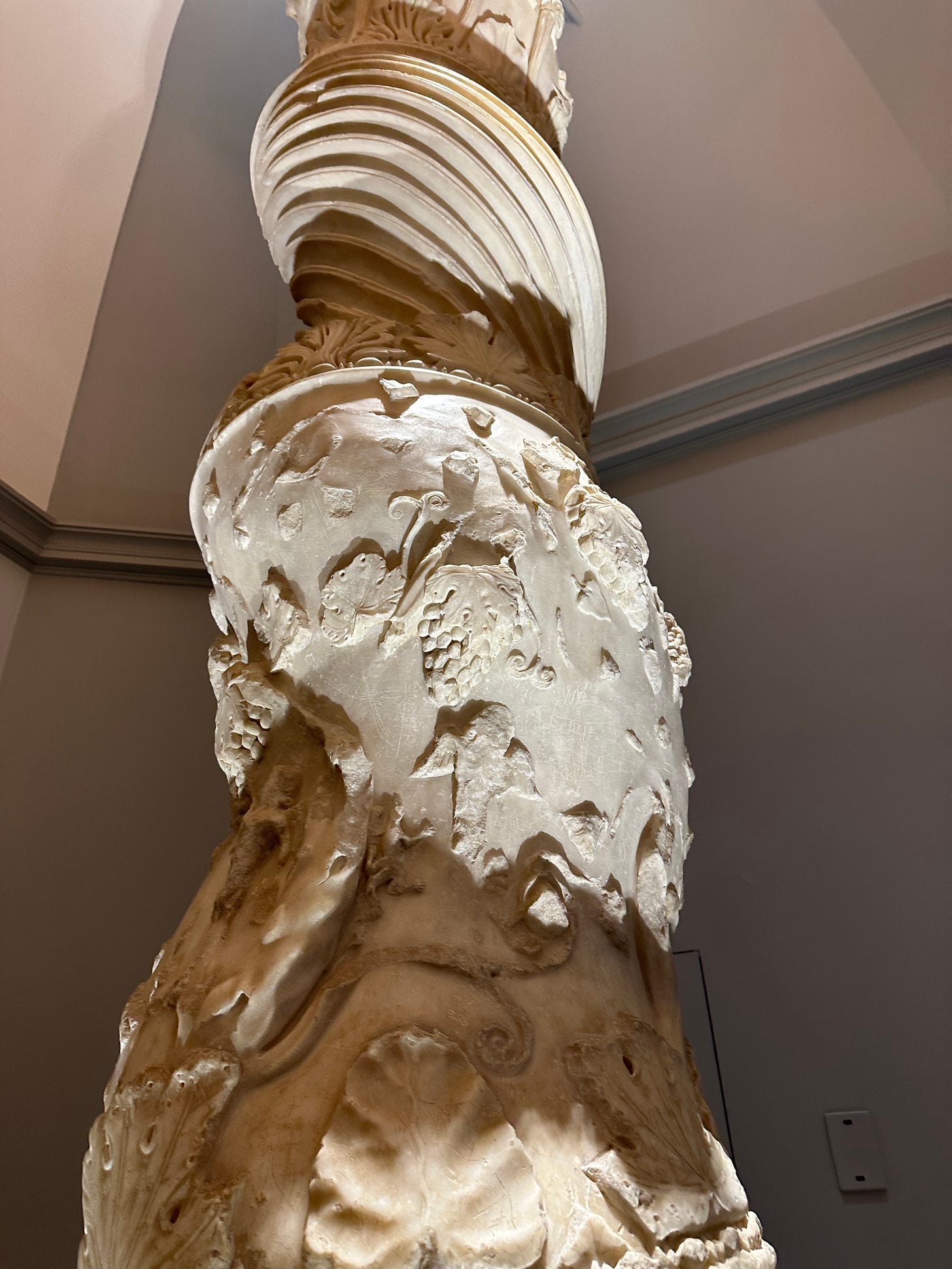All photos taken on 5 November 2024 unless otherwise specified
After months of buffing and gilding in preparation for next year’s Jubilee the Baldacchino at St Peter’s is, at last, once again visible. It looks amazing. The commission for the project was granted to the then twenty-five year old Gianlorenzo Bernini in 1624 by the newly incumbent Pope Urban VIII, who had been elected in the long, hot, conclave which ended on 5 August 1623. Pope Urban, né Maffeo Barberini, had first met Bernini in the circle of Scipione Borghese and upon his election was determined that the young sculptor should be the expression of his papacy.
The reign of Urban VIII lasted over two decades, an unusually long time for any pope, and these years would be intense for the history of art. His papacy was a defining period for the burgeoning Roman Baroque. The Baroque is the material response to the Protestant Reformation which had begun a century earlier. Quite simply it is as un-Protestant as possible. What could be less Protestant than a gilded bronze canopy thirty metres (a hundred feet or so) high?
Nearly a hundred and twenty years after the foundation stone of the new church of St Peter had been laid the building was nearing completion and Pope Urban VIII had every intention of consecrating the new church on the 18th November 1626, the thirteen hundredth anniversary of the consecration of Old St Peter’s and the Baldacchino was his first commission for the decoration of the new church.
The project’s genesis is still not entirely clear, though it is known that the decision to create a vast canopy upon twisted columns was not Bernini’s own. It is supported upon Solomonic columns evoking those of the old church of St Peter’s which, tradition said, included at least one brought back from Jerusalem by Helena, mother of Constantine which is now to be found in the Treasury Museum at St Peter’s.
Keep reading with a 7-day free trial
Subscribe to Understanding Rome's Newsletter to keep reading this post and get 7 days of free access to the full post archives.




